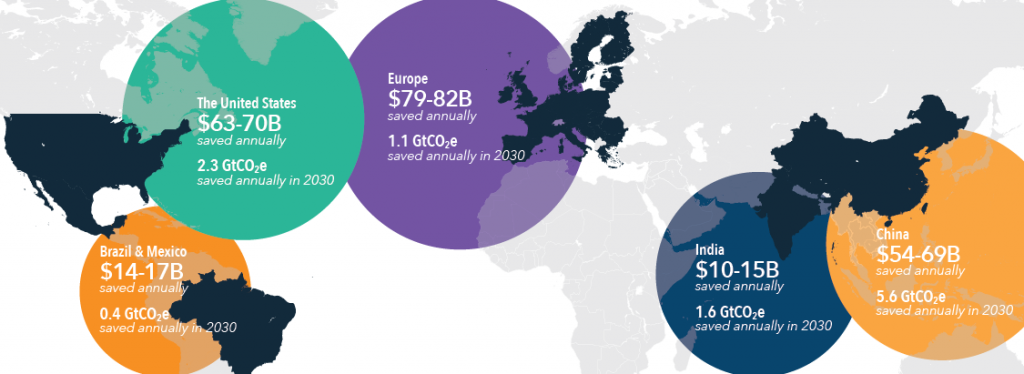How Energy Efficiency Cuts Costs for a 2°C Future
A new report — “How Energy Efficiency Cuts Costs for a 2°C Future” — analyzes how energy efficiency policies and programs in Brazil, China, Europe, India, Mexico, and the U.S. can reduce the cost of economy-wide decarbonization by up to $250 billion per year for these regions, with no net cost to society through 2030. The report was funded by ClimateWorks and the research was carried out by a consortium of groups led by Fraunhofer ISI.
“How Energy Efficiency Cuts Costs for a 2°C Future” modeled several pathways to identify the contribution of energy efficiency to achieving the internationally-agreed 2°C upper limit for climate change. The results show that, by following an energy efficiency pathway, policymakers can achieve low cost energy reductions through to 2030 while also cutting carbon emissions from the energy supply. In contrast, an energy intensive pathway that focuses primarily on decarbonizing energy supply with more limited energy efficiency policies can help achieve a 2°C future, but at substantially greater expense.
Between now and 2030, energy efficiency can reduce the global cost of limiting warming to 2°C by up to $2.8 trillion compared to a more energy intensive pathway. The potential annual savings of the energy efficiency pathway vary by nation. Annual savings range from 0.1 to 0.4 percent of annual GDP and are not sensitive to macroeconomic shifts or to changes in fuel price.
In addition, the economic benefits of energy efficiency can help eliminate energy poverty. Recent research by the World Bank shows that the world can achieve universal access to electricity through investments of between $40 billion and $100 billion annually. The $250 billion saved in the regions studied could help finance this critical goal.
